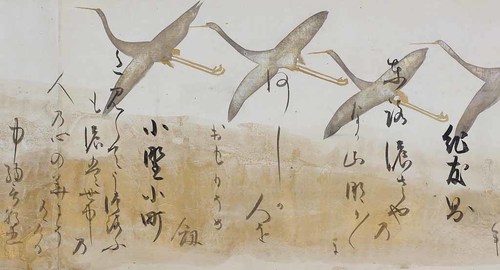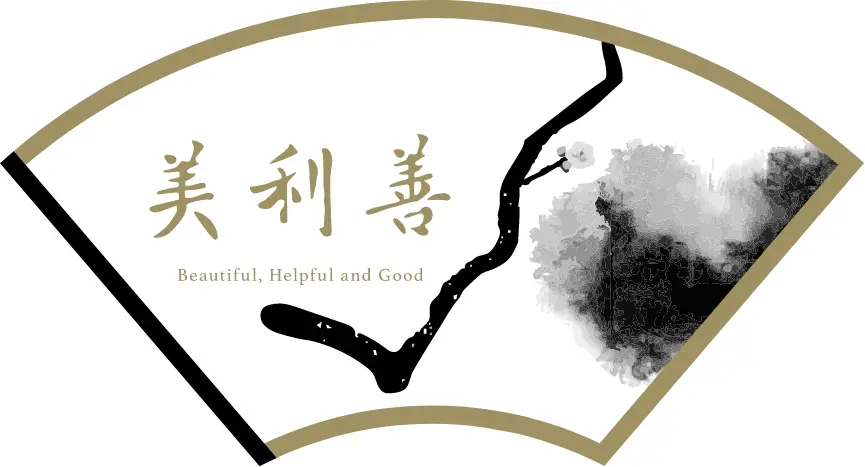Friends from a World Unseen

The works of the ancients who lived through times of war make us keenly aware of the preciousness of peace and our responsibility to maintain it.
About 400 years ago, Hon’ami Kōetsu and Tawaraya Sōtatsu, the founders of Rinpa, lived during the turbulent period from the Azuchi-Momoyama period to the early Edo period. Warfare in Japan continued for more than 100 years, and the military strength of Japan at that time was estimated to be about 150,000 to 500,000 men, far surpassing that of Spain, the military superpower of the time.
They cooperated to create picture scrolls. It went further back in time by 900 years and focused on about 300 years lived by people known as the “Thirty-six Immortal Poets”. One of these scrolls, “Anthology with Cranes”, uses cranes, a symbol of longevity, as its motif.
The names of the 36 poets and their waka poems, which are proof of their lives, are written in impressive brush strokes, and above them is a group of beautiful cranes with gold beaks and legs and silver bodies. The names of the poets and their waka poems are almost arranged in chronological order, with the poets and poems flowing to the right (past) and the flock of cranes flying to the left (future).
This work reminds us that more than 1,300 years ago, we Japanese were connected through waka poems, transcending differences in status, gender, generation, and position, and that this connection must not be severed.
Hon’ami Kōetsu and Tawaraya Sōtatsu were outstanding not only as creators but also as business executives. We shall apply what we have learned from them to our business to build a better society and connect it with the next generation.
Image source: ColBase
Important Cultural Property “Anthology with Cranes”, Calligraphy by Hon’ami Kōetsu (1558-1637), Painting by Tawaraya Sōtatsu (active from 1602 to 1635), Edo period, 17th century, Kyoto National Museum Collection

